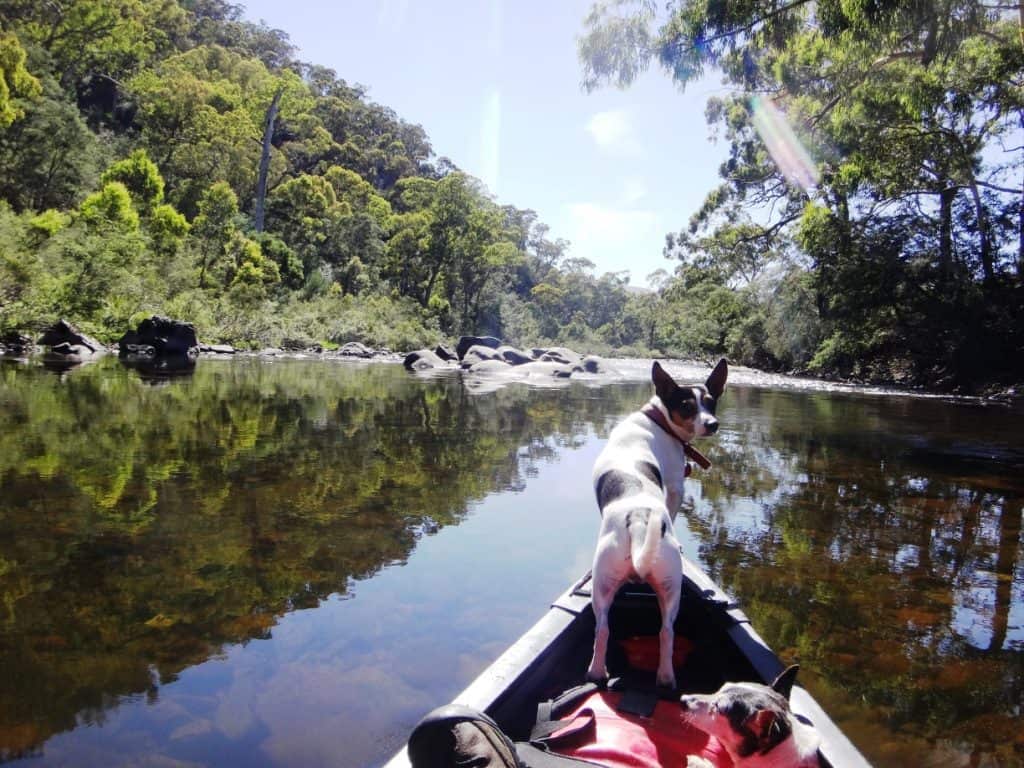We returned to this beautiful section of the river again this year for a three day trip. Last year we canoed it in two which did not really give us enough time to savour it. With just a 2WD vehicle you can canoe down from Eaglevale to Kingwill in 3 days, another 3 days to Meyers Flat, and a further 3 days to Angusvale. Nine unsurpassed idyllic leisurely days on this incomparable river. It is all only pebble races with the odd easy Grade 2 rapid except for about 3 Grade 3 rapids just upstream from Angusvale which can be portaged. Put that on your ‘Bucket List’.
Of course if you have a 4WD (or at least a pack raft) you can begin at the Humffray confluence and spend 2-3 days coming down to Eaglevale. If you are fairly experienced, you can come down from Angusvale to the Glenaladale Bridge again taking your time and completing it in three days to make a total of 15! Of course, you can continue on to Lake King on largely flat water…
The river height was 1.81 at Waterford when we began and 1.77 when we finished. We hardly ever had to get out of the boats.
We camped the first night after about three hours on the big flat on the true right bank opposite McGuires Track (above Hut Creek). The second night we camped again after about three hours on the true right bank just below where Scrubby Creek track joins the river coming down from the Wonnangatta Road – this is the last camping spot before the bridge. This left us again about three hours for our third day down to Meyers Flat – about half an hour below the Waterford Bridge.
If you were doing it in two days, you would camp about where we had lunch ie below Hut Creek, after you leave the walnut farm on the left bank, round a sharp point and are cruising along a long flat on the true right bank. There are many other spots where you can stop and camp though.
Here we are setting out from the ford just just above the Kingwill Bridge. If you are confused, I am facing upstream.
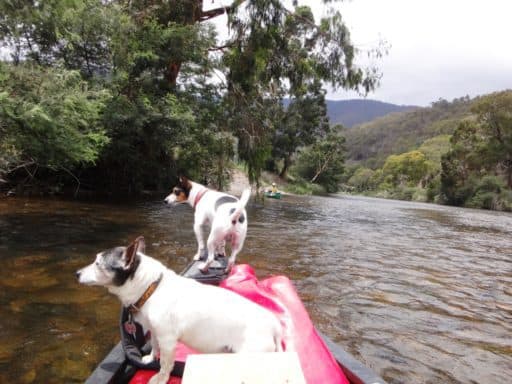
I have already posted lots of photos of the river, so I will just include some items of interest (I hope).
Wood ducks take flight.
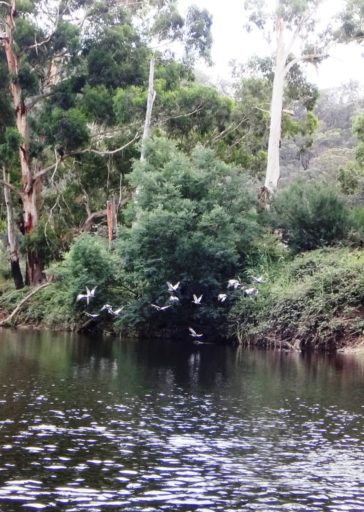
A farmer, having had much of his land stolen by the Government losing new fence after new fence to the river…
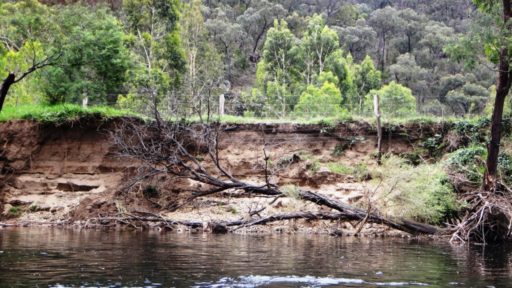
Entropy hits the Hawkhurst swing bridge
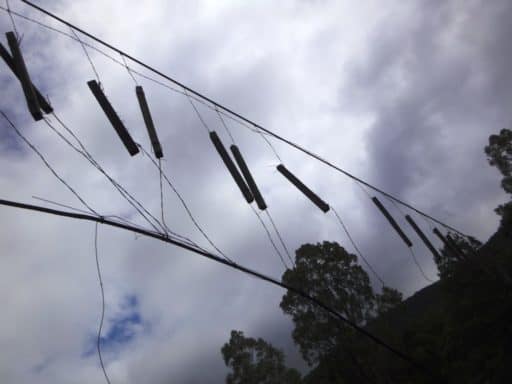
Strange things appear in river wrack.
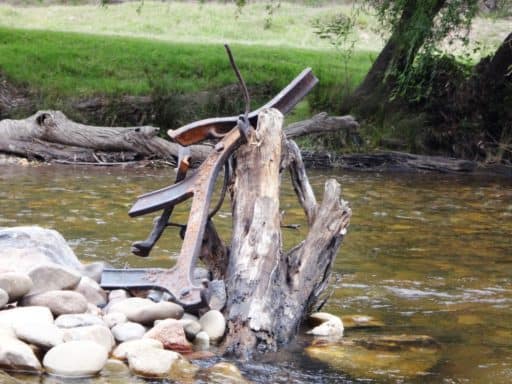
Cows and ducks watch us pass.
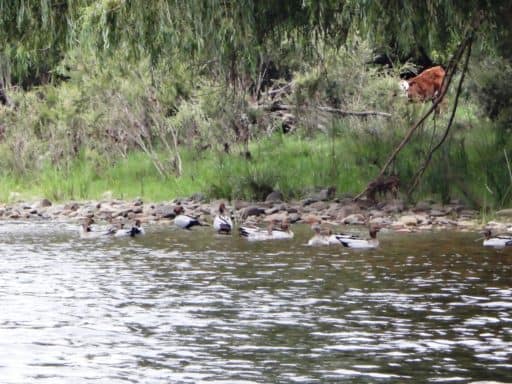
And blue cranes…
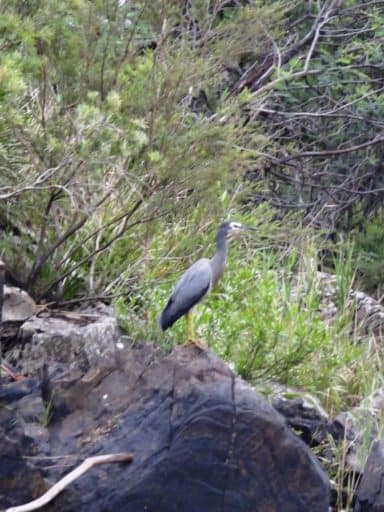
A rare bird: a Nankeen Night Heron.
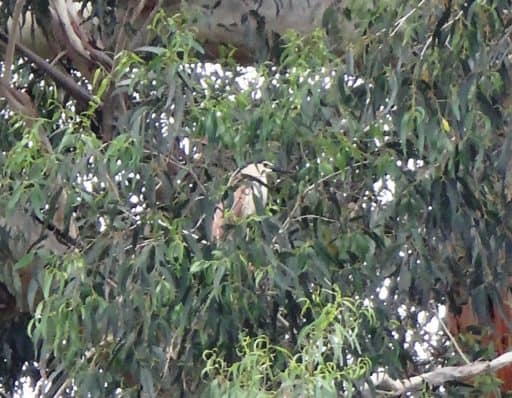
We camped ‘By the Light of the Silvery Moon’. It was a ‘super moon’ actually, 18% bigger than normal because of the moon’s apogee and perigee – perigee in this case. It was bright enough to read a newspaper by!
You could have walked for miles through the bush without a torch. People used to in the past. Special events such as balls and public meetings were always held at the full moon – before there was street lighting. What a drawback that is, drowning out (as it does) the awesome Milky Way, and all the stars, so city folks are blind as moles.
When I was a lad we used the full moon to spotlight possums by ‘walking’ the moon along an overhead branch then plink them out of the trees with .22 shorts. They are usually noisy enough to alert you to their presence. Their skins were quite valuable (and not illegal) then! Their flesh made a useful addition to the pot.
I will (eventually) work out how to take moonlight photos with my new camera. First I will need to read the instructions! Still, you get the point.
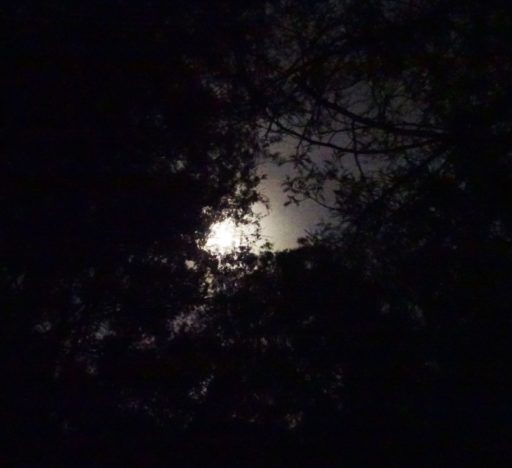
A very hastily erected tent. I tautened it up a little bit later. We had jammed the centre pole in wrongly, catching the material. I like how it caught the light of the westering sun. Della is ‘intent’ on the ebookon her phone.
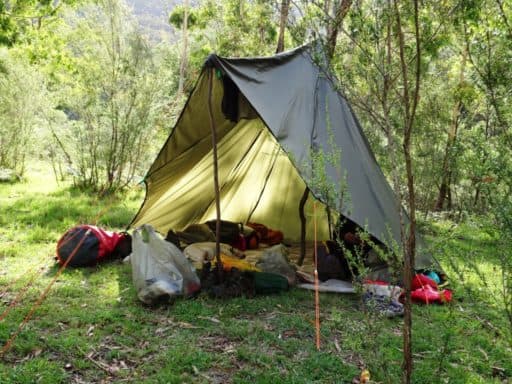
While I am enjoying a read on my phone and an apple with Spot. I am re-reading the ‘Flashman’ books by George MacDonald Fraser. They are the best ‘history’ books ever. What a wonderful ‘cad’ he was. You might remember him from ‘Tom Brown’s School Days’? In any event he blustered and swyved his way through most important events of the C19th. Inimitable.
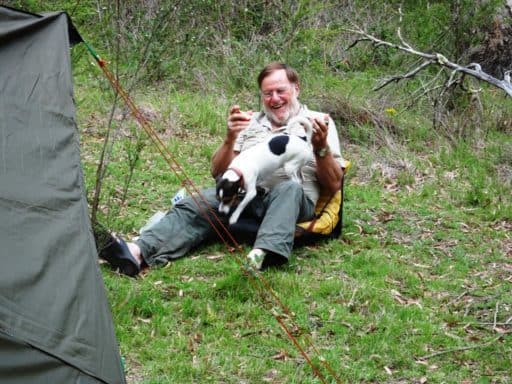
Some other recent travelers had erected a monument (perhaps to us?) at Hut Creek. I like to think they were ‘following in my footsteps’. This is where you would put in for a one day trip – about four wonderful hours to the Waterford Bridge.
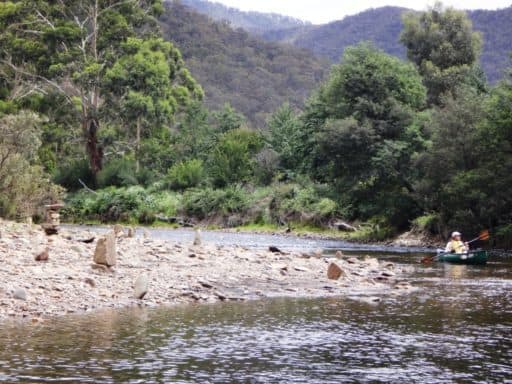
Lunch spot on the second day (looking upstream). That is the flat (opposite) I said you might camp on if you were canoeing this over two days.
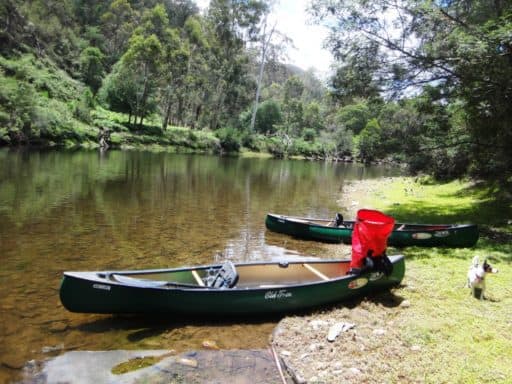
Some lunchtime visitors: an interesting tadpole:
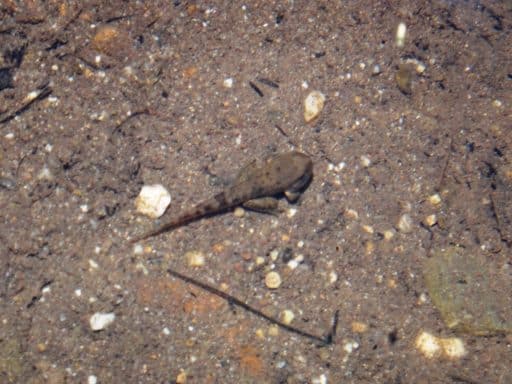
And some truly enormous carp – they must have been 2′ (60 cm) long!
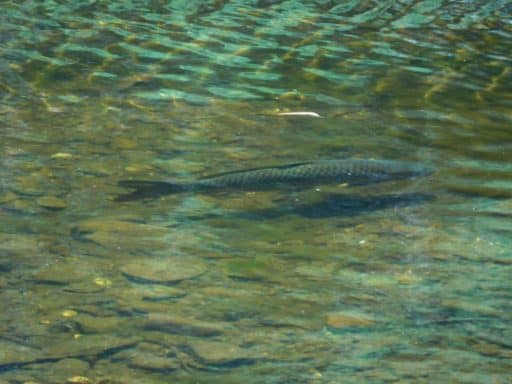
A little further on (just above Scrubby Creek) this guy was dining on the (scant) leavings of a hunter’s deer carcass. He had the most amazing orange colored stripes which the camera has rendered yellowish. They are amazingly attracted to carrion and will come from faraway. They also know where every tree hollow is (I guess ’cause they frequently dine on birds’ eggs and chicks) – they will disappear into the smallest hollow overhead in a twinkling.
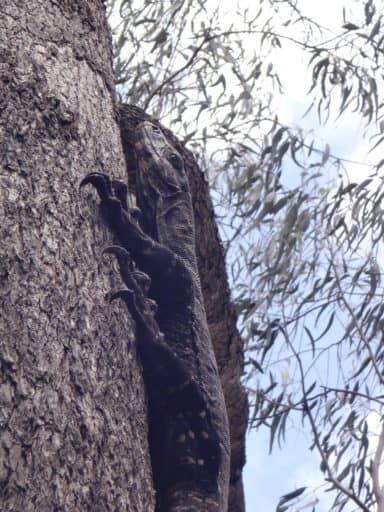
The Scrubby Creek Track crossing. Whose vehicle does Spot think is the better? I know which is quieter and allows more enjoyment of the bush, wildlife, etc.
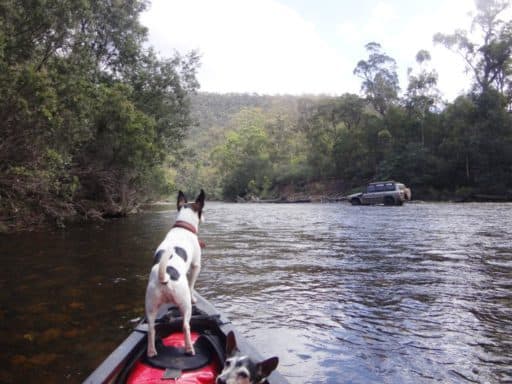
About a kilometre below the Scrubby Creek Track crossing you will see a clearing on your right, then you will sweep around a bend and see these ‘Dragon’s Teeth’ in the river. the last camp is on your right before these ‘teeth’.
The next spot you can camp is on your right about 100 metres above the Waterford Bridge.
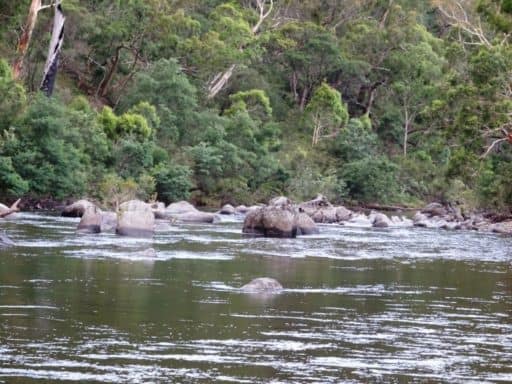
It is a fine grassy flat. This is a photo of the tent in the morning. When I erect it, I just go around and push all the pegs in and place the poles in their pockets. That’s it. No adjustment. There was a wind in the night (and a light shower) but this is what the tent still looked like in the morning as we were packing; taut as. It still looks pretty much the same when I remove all but four of the pegs! As I say, I like a tent which goes up easily but does not come down the same way! It is also really nice to be able to stand up inside to get dressed too. A cheery fire out the front is welcome in cold weather.
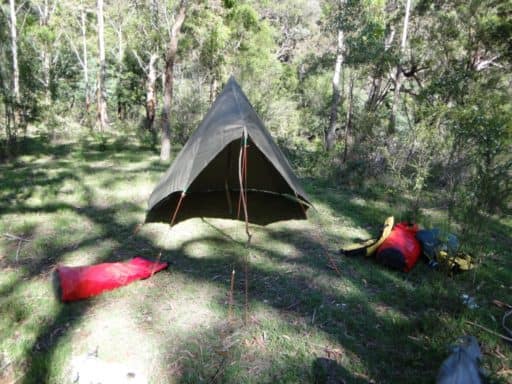
Again there was a full moon. I had another go, not so clear this time. Oh well…
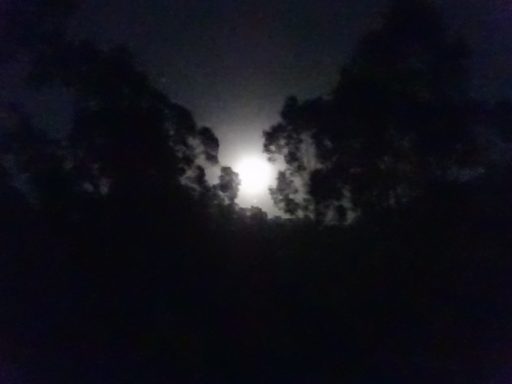
We challenge ‘The Dragon’s Teeth’.
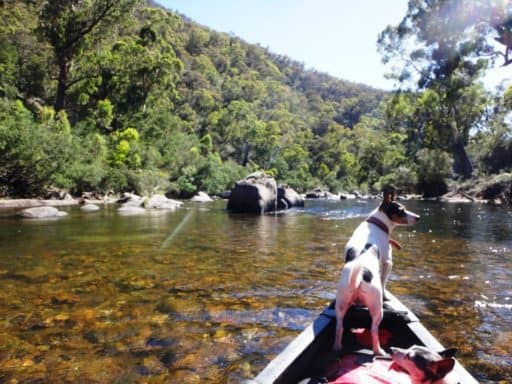
This bouldery section of the river (at the beginning of Guy’s property) is really beautiful.
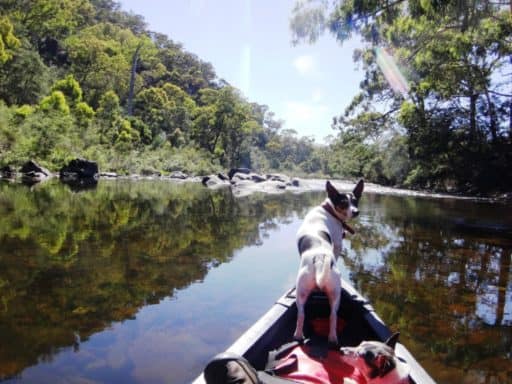
Spur-winged plovers – they really do have a spur which can deliver a nasty cut! They seldom do, so do not worry overmuch about their piercing cries – or swooping when they have (invisible) chicks.
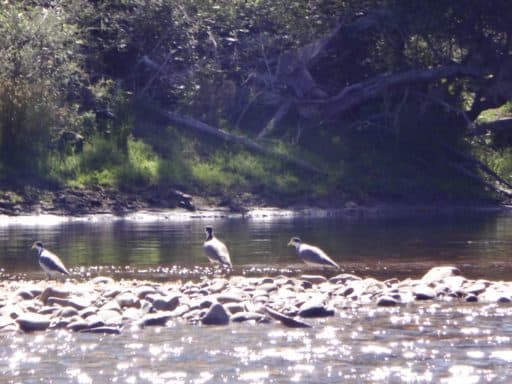
Just relaxing on the river…
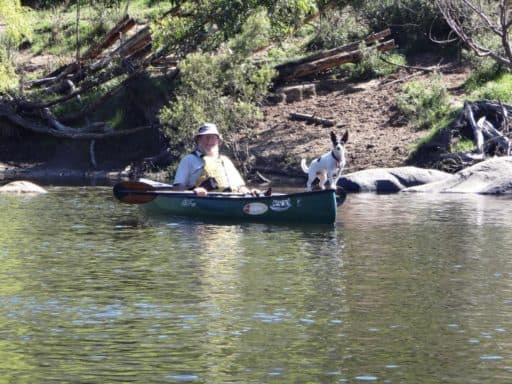
A lovely placid section.
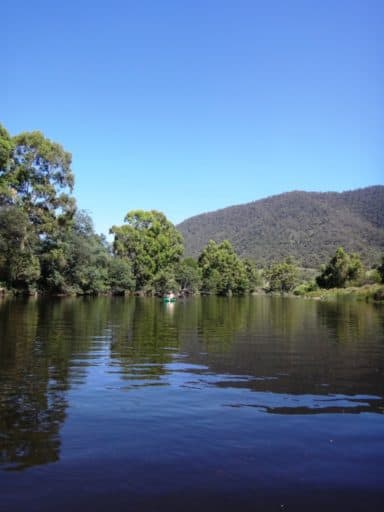
Of course there are small drops here and there.
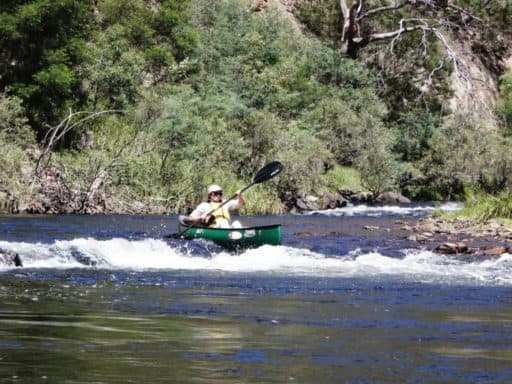
One of my favourite birds – a Black Faced Cuckoo Shrike (Blue Jay). I adore their dipping flight. a bit of camera shake at 20X zoom and whilst paddling. Sorry.
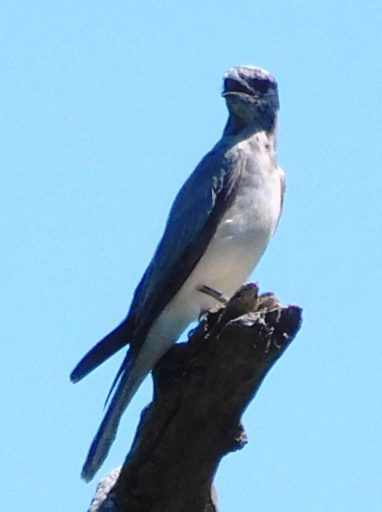
And another, a Bee Eater, or Rainbow Bird. You will be alerted to their presence by their shrill whistle. These two were just above the Waterford Bridge. Both snaps were still taken with my old camera. I am afraid to get my new one wet too!
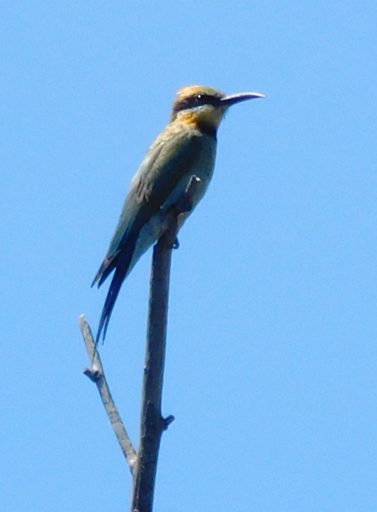
The flat where we camped on the first night I used to call ‘Bellbird Flat’ on account of the myriad Bell Miners whose piercing chimes followed you relentlessly as you meandered along it. The terrible fires of 2007-9 pretty much wiped them (and a zillion other critters) off the map. It was delightful to find a colony of them on the right bank above Scrubby Creek. Here is a sample of their work:
I deplore the ‘management’ of Parks Vic, Catchment Management Authorities and the like. Critters which were saved for centuries by a diversity of public land uses have been destroyed in the wink of an eye by their ministrations. Instead of multiple use: forestry, mining, grazing, tourism, introduced plants and animals etc with fuel reduction burns, well-manged ‘fire trails’ dugouts, settlements, huts etc, we have vast areas under a locked-up monoculture with no management of any sort (unless having meetings and writing reports can be termed management – I think it can). When it decides to burn nothing can be done and it is all wiped clean of life of any sort for many years to come, perhaps a lifetime.
In just three days along this relatively undisturbed section of river (some of which was ‘saved’ from wildfire destruction by the wonderful and heroic CFA – because of its proximity to private land) we saw (or their tracks of, nests etc) a bewildering variety of life: two kinds of deer, four of possums, two of macropods, (unknown of) bats, four of reptiles, four of fish, three of amphibia, four of snakes, at least three of night birds, and I guess nearly a hundred of different (day) birds, apart from these Bell Miners…
When we were at Primary School we were tasked to learn this lovely poem by heart; time not wasted:
The Bellbirds,
Henry Kendall:
‘By channels of coolness the echoes are calling,
And down the dim gorges I hear the creek falling:
It lives in the mountain where moss and the sedges
Touch with their beauty the banks and the ledges.
Through breaks of the cedar and sycamore bowers
Struggles the light that is love to the flowers;
And, softer than slumber, and sweeter than singing,
The notes of the bell-birds are running and ringing.
The silver-voiced bell birds, the darlings of daytime!
They sing in September their songs of the May-time;
When shadows wax strong, and the thunder bolts hurtle,
They hide with their fear in the leaves of the myrtle;
When rain and the sunbeams shine mingled together,
They start up like fairies that follow fair weather;
And straightway the hues of their feathers unfolden
Are the green and the purple, the blue and the golden.
October, the maiden of bright yellow tresses,
Loiters for love in these cool wildernesses;
Loiters, knee-deep, in the grasses, to listen,
Where dripping rocks gleam and the leafy pools glisten:
Then is the time when the water-moons splendid
Break with their gold, and are scattered or blended
Over the creeks, till the woodlands have warning
Of songs of the bell-bird and wings of the Morning.
Welcome as waters unkissed by the summers
Are the voices of bell-birds to the thirsty far-comers.
When fiery December sets foot in the forest,
And the need of the wayfarer presses the sorest,
Pent in the ridges for ever and ever
The bell-birds direct him to spring and to river,
With ring and with ripple, like runnels who torrents
Are toned by the pebbles and the leaves in the currents.
Often I sit, looking back to a childhood,
Mixt with the sights and the sounds of the wildwood,
Longing for power and the sweetness to fashion,
Lyrics with beats like the heart-beats of Passion; –
Songs interwoven of lights and of laughters
Borrowed from bell-birds in far forest-rafters;
So I might keep in the city and alleys
The beauty and strength of the deep mountain valleys:
Charming to slumber the pain of my losses
With glimpses of creeks and a vision of mosses.’
See Also:
http://www.theultralighthiker.com/pack-rafting-the-remote-wonnangatta/
http://www.theultralighthiker.com/a-wonnangatta-spring/
http://www.theultralighthiker.com/wonnangatta-waterford-to-angusvale-day-one/
http://www.theultralighthiker.com/wonnangatta-kingwell-bridge-to-black-snake-creek/
http://www.theultralighthiker.com/wonnangatta-black-snake-to-hut-creek/
http://www.theultralighthiker.com/wonnangatta-hut-creek-to-waterford-bridge/
River Heights: http://www.theultralighthiker.com/canoeing-the-wonnangatta-catching-the-wave/
http://www.theultralighthiker.com/gippsland-pack-rafting-routes/
http://www.theultralighthiker.com/canoeing-in-gippsland/
http://www.theultralighthiker.com/you-take-the-high-road-and-ill-take-the-low/

